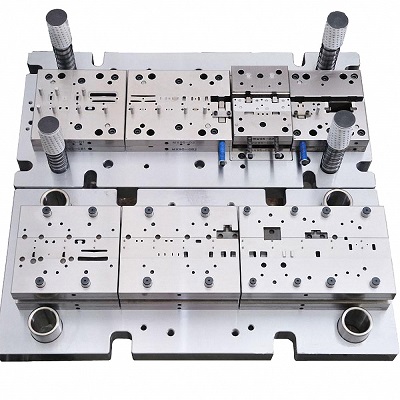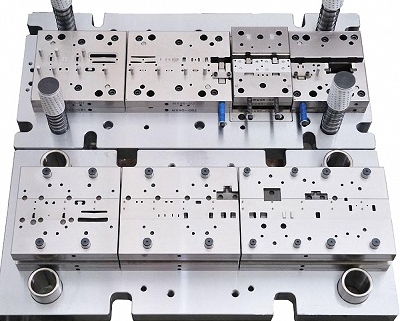Progressive Die Stamping Manufacturer
Progressive Die Stamping Manufacturer

We are china-based metal parts manufacturing company providing world-class quality at China prices. Our main services is metal stamping.We have many press machine from 5T to 1000T .As you know well, the Progressive Die Stamping is very important for stamping process. As a prossional Progressive Die Stamping Manufacturer, we can design the dies to produce your item more effectively at low cost.
Progressive Die Stamping
The progressive die is composed of multiple stations, each station is connected in order to complete different processing, and a series of different stamping processing is completed in one stroke of the punching machine. After one stroke is completed, the punch feeder moves the material forward in a fixed step, so that multiple processes can be completed on a pair of molds, generally including punching, blanking, bending, trimming, and deep drawing and many more.
Features
1. The progressive die is a multi-task sequential punching die. In a pair of die, it can include multiple processes such as punching, bending and stretching, and has high productivity;
2. Safe operation of progressive die;
3. Easy to automate;
4. It can be produced by high-speed punching machine;
5. It can reduce the punching machine, the area of the site, and reduce the transportation of semi-finished products and warehouse occupation;
6.Parts with extremely high size requirements are not suitable for production using progressive molds.
Product Range
1. Small parts;
2. Large batch;
3. The material is thinner (0.08~2.5mm);
4. The material is soft;
5. The shape is more complicated;
6. Precious metals are not suitable (low utilization rate);
7. Too high accuracy is not suitable (below IT10 level).
Application
Whether a stamping part adopts a multi-station continuous die should consider the following aspects:
(1) Design, production and maintenance of continuous molds
The structure of the multi-station continuous mold is quite complicated, and the manufacturing accuracy is much higher than that of the general mold. After each batch production, it must be overhauled, sharpened, and tested before being put into storage for use. Some small punches must be replaced in time after the inserts are worn or damaged. For bending, drawing, and forming multi-station continuous dies, when sharpening the cutting edges of punches and dies, the relative height of other parts must be corrected at the same time. For the multi-station continuous die for bending, deep drawing, and forming, the height of the punch and the die is often different, so the relative difference required by the original design must be maintained after sharpening. Must have a certain technical level of maintenance workers and the necessary more sophisticated special equipment.
(2) Applicable press
The press used for the continuous die should have sufficient strength, rigidity, power, precision, a large work surface and a reliable braking system. The stroke of the punch should not be too large to ensure that the continuous die set guide system does not disengage when it is working. Generally, work should be performed below 80% of the nominal pressure of the press. The multi-station continuous mold should be equipped with a detection mechanism for strip feeding failure. After the detection mechanism sends a signal, the brake system must be able to stop the press immediately to avoid damage to the mold or machine tool.
(3) Good processed materials
During the continuous die punching process, intermediate annealing is not possible, and it is inconvenient to increase lubrication during processing. Therefore, the mechanical properties of stamping materials must be relatively stable. Each batch of materials that enter the factory must be tested and inspected according to regulations; continuous die stamping The width and thickness tolerance of the strip, and the flatness of the material edge have higher requirements, because they will directly affect the punching effect and the feeding of the strip.
(4) Stamping parts should be suitable for multi-station continuous die punching
4.1. The output and batch size of the processed parts should be large enough.
4.2. The material performance of the multi-station continuous mold is lower than that of other molds.
4.3. The accumulative error between the feeding accuracy and each process step will not reduce the accuracy of the parts.
4.4. For parts with complex shapes and inconvenient positioning after punching, it is most ideal to use a multi-station continuous die.



